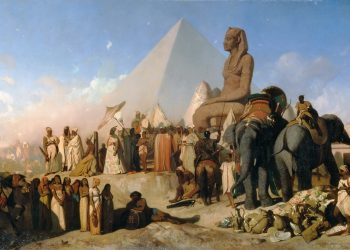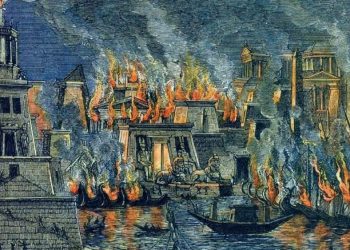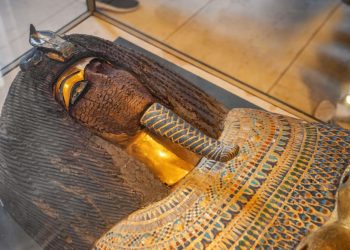Legends from days of yore talk of two lethal weapons used in wars, one is the Greek Fire, and the other is Archimedes’ death ray.
These weapons have been exhibited in famous medieval fantasy movies, literature, and even some best-rated television series, like the Game of Thrones.
Greek Fire remained the most lethal weapon for Romans for over seven centuries. It is largely responsible for countless byzantine victories and is probably one of the major reasons the Roman Empire remained undefeated for so long.
Let’s take a closer look at all the mysteries surrounding the Great Greek Fire.
When was it used for the first time?
Many historians agree that Greek Fire was initially used against the local Greek rebels. In 514, the emperor Anastasios I used this incendiary weapon to set general Vitalian’s ships on Fire.
King Romanos II (r. 959-963CE) understood its worth and ordered three objects to never reach foreign hands: the Byzantine imperial scepters, any princess, and the Great Greek Fire.
Historical records proclaim that the first two were, on occasions, bestowed upon foreign rulers for negotiation purposes but never the third.
Who Invented It?
Even though Kallinikos is considered the discoverer of the combustible mixture, there are proofs that it was present and being used long before him as the Kingdom of Pontus in Asia used a similar incendiary combination against the Romans amid the Mithridatic Wars in the 1st century B.C.
It is believed that Kallinikos’ major contribution was to make the fiery weapon more efficient and easier to handle.
How was it Used?
The inflammable liquid was a mixture of secret ingredients used both in catapulted arsenious bombs and sprayed with pressure vessels to set enemy ships on Fire.
The Byzantines typically used it in sea battles to set enemy ships from a calculated distance ablaze. Its unique advantage was to stay lit on the water surface for a certain amount of time.
This unbeatable technique also gave them the upper hand in the rescue of Constantinople during the Arab blockade of Constantinople during 674-678 C.E.
How to Make Greek Fire?
Known to only a trusted few, the recipe for Greek Fire was a highly guarded state secret that remained between the Kallinikos family and the Byzantine royals for generations.
Some suggested ingredients are naphtha, quicklime, sulphuric acid, resin, and potassium nitrate. Some scholars believe that gunpowder was also added to the mixture.
The process of mixing the ingredients was perilous. Distilling the naphtha also required complex methods at that time. The exact modus operandi, however, is still a mystery.
How was the recipe for Greek Fire lost?
The accurate recipe for Greek Fire was always a top guarded secret, from the moment it was discovered until the downfall of Constantinople and the Byzantine kingdom in 1453.
After that, it slowly fell out of use, and then gradually, it went out of mind.
Historians believe that the Greeks never wrote down the recipe. Instead, it was always being passed down by those responsible for its production to their successors.
Were Greeks the Only Ones to Use it?
Greek Fire went into the hands of Byzantine enemies on many occasions, notably the Bulgarians. But perhaps it required some special kind of ignition just before launching, which was unknown to the world, just like its composition and formulation; that is why they were unable to benefit from it.
However, there are historical records of Arabs using a similar kind of Fire, their own modified version, against the crusaders in the 13th century.
Was it a divine gift?
The Greek people used to describe the discovery of Greek Fire as a “divine intervention.”
Their king Constantine Porphyrogennetos (AD 945–959) wrote in his book De Administrando Imperio to never disclose the secrets of its composition because, according to him, it was revealed by a holy angel to the first Christian ruler named Constantine. The angel refrained him from disclosing its secrets as it was only to be used by Christians and only in the imperial city.
It was perhaps just an attempt to legitimize the Roman oligarchy as theocracy among the public.
How to Put Out Greek Fire?
The liquid concoction scalded everything it touched, ship and human flesh alike. Since the original recipe was unknown, no one had any idea how to extinguish it.
There are some bizarre speculations that only strong vinegar, sand, or urine could douse it.
When was it used for the last time?
When and how Greek Fire was put out of use is unknown.
But from the 4th Crusade (AD 1202-1204) on ahead, any proof of usage of Greek Fire is nowhere to be seen. It was abandoned and left alone, remaining a mystery that many scientists have tried in vain to recreate throughout the centuries.
How is Archimedes’ work related to Greek Fire?
Both Greek Fire and the Archimedes death ray were highly flammable weapons. The Greek mathematician and inventor Archimedes developed Archimedes’ death ray to protect Syracuse from the Roman army in 214 BC. It was a very large mirror that focused the rays of the sun into a deadly lazar that set the coming enemy ships on Fire.
This method seems to be the ancient precursor of how kids today set a paper on Fire with the help of a magnifying glass.
New research suggests that it is possible that Archimedes used a fiery steam cannon and a giant cannonball instead. Historical shreds of evidence and mathematical computation support the theory of cannonballs more strongly than burning mirrors.
The legendary myths of Greek Fire and the Archimedes’ death ray have been aggrandized by folks over time. Both the weapons were a true depiction of human erudition and savagery to gain a tactical advantage over an adversary.
Join the discussion and participate in awesome giveaways in our mobile Telegram group. Join Curiosmos on Telegram Today. t.me/Curiosmos











